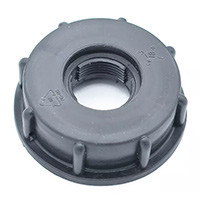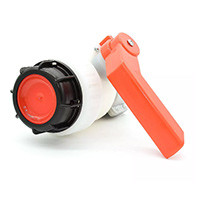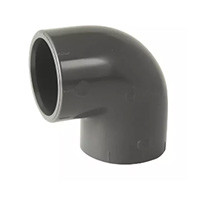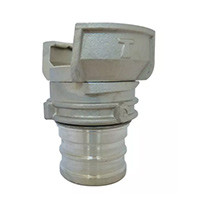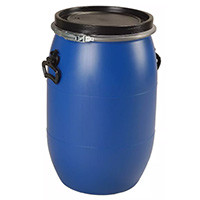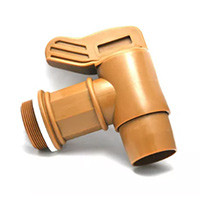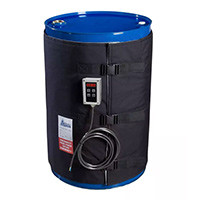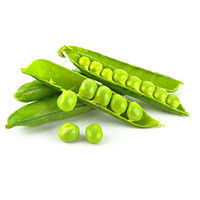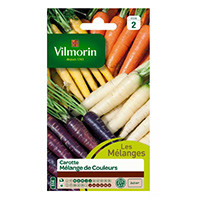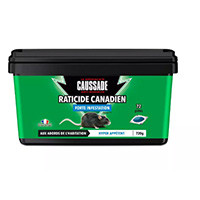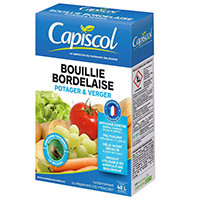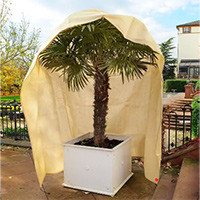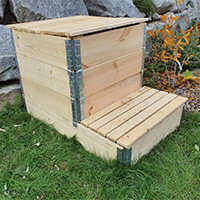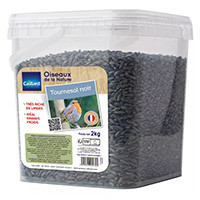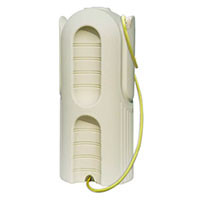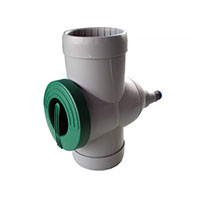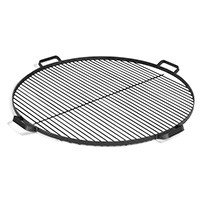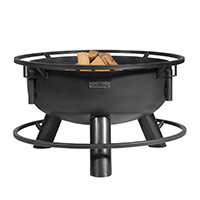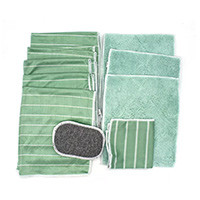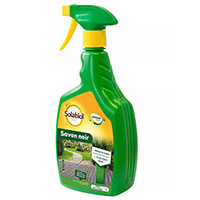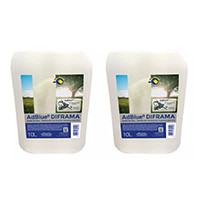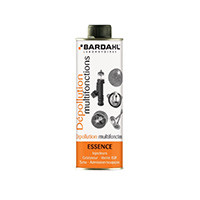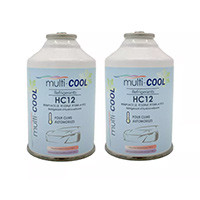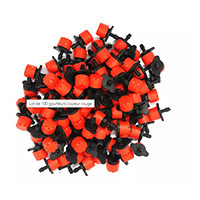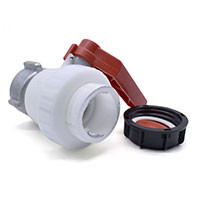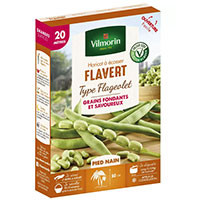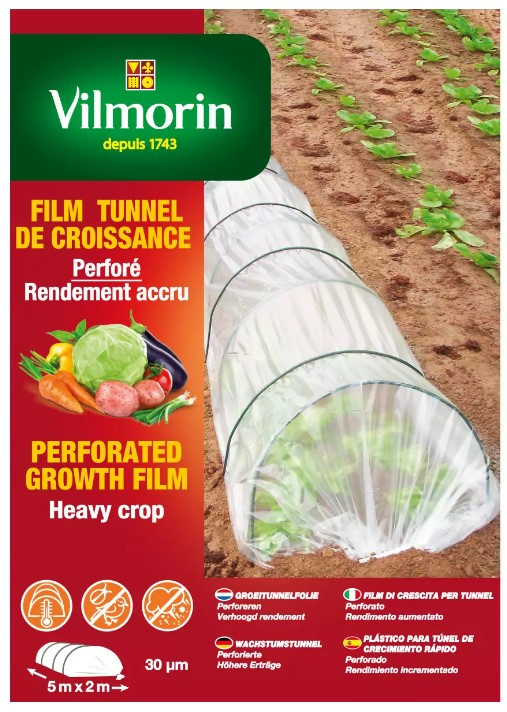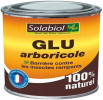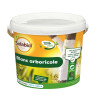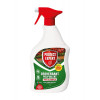Table of Contents
Introduction
What is a plant protection product?
Plant protection products, often referred to simply as "phytos", are substances or preparations intended to protect plants against all kinds of threats, whether they are insect pests, diseases, weeds or other undesirable organisms. The term "phyto" comes from the ancient Greek meaning "plant," while "pharmaceutical" refers to the medical or therapeutic nature of these products.
There is a wide range of plant protection products on the market, each designed for a specific application. For example, a herbicide is designed to control weeds, while an insecticide aims to eliminate or repel insect pests.
For an individual, these products can be essential tools to ensure the health and beauty of their garden, vegetable garden or crops. However, as with any chemical or biological product, it is crucial to use them carefully, to fully understand how they work, and to strictly adhere to the recommendations for use to ensure both the effectiveness of the treatment and the safety of the user and the environment.
At the end of the day, a plant protection product is a gardener's ally, designed to support and enhance plant life, but it should be used with informed understanding and careful responsibility.
Why is this topic relevant to individuals?
At a time when self-sufficiency, sustainability and ecology are at the heart of concerns, more and more individuals are embarking on gardening and horticultural activities. Whether you're looking to grow your own vegetables for a healthier diet, beautify your outdoor space, or simply enjoy the therapeutic benefits of gardening, the issue of plant protection inevitably becomes central.
However, the world of plant protection products can seem complex and intimidating to a novice. On the one hand, it's essential to understand which products to use to effectively treat the specific problems encountered in the garden or vegetable garden, whether it's invasive insects, fungal diseases, or other pests. On the other hand, safety is paramount: incorrect or excessive use of these products can have harmful consequences, both for plant health and for the environment or even human health.
In addition, with the resurgence of environmental concerns, many individuals want to ensure that the products they use are environmentally and biodiversity-friendly. It is therefore essential to have clear and reliable information to make informed choices.
By addressing this topic, we aim to equip individuals with the knowledge to navigate the world of plant protection products with confidence, so that they can fully enjoy the benefits of their garden while preserving their environment and health.
History of plant protection products
Brief Timeline: From Origins to Today.
The relationship between man and nature has always been closely linked to the search for ways to protect crops. The search for tools and solutions to combat pests and diseases dates back thousands of years, long before the term "plant protection" was coined.
Antiquity: Ancient civilizations, such as the Egyptians and Chinese, already used natural substances to protect their cultures. For example, sulphur was used to control dust mites and various plant diseases.
Middle Ages: With the rise of agriculture, various solutions, often based on mixtures of grasses and other substances, were used to repel pests. Writings from this period mention the use of concoctions based on garlic, chili pepper or chrysanthemum.
Renaissance: The art of distillation is perfected, which leads to the extraction of essential oils and more powerful substances for plant protection.
18th and 19th centuries: It was a time of great chemical discovery. The first synthetic pesticides were introduced, with lead arsenate as an insecticide and Bordeaux mixture as a fungicide.
20th century: Technological and scientific advances have led to the emergence of a wide range of synthetic plant protection products. The Green Revolution in the 1960s marked a turning point with the intensification of agriculture and the increasing use of these products. However, in the face of environmental concerns, movements for more natural and organic agriculture are emerging.
21st century: The debate on plant protection products is intensifying. On the one hand, their use is crucial to meet the world's food needs. On the other hand, the need to protect the environment and human health is driving the search for more sustainable alternatives and stricter regulation of these products.
Today, the plant protection products market is constantly evolving, seeking to combine efficiency, sustainability and respect for nature, while meeting the specific needs of farmers and gardeners around the world.
The evolution of their use by individuals.
The history of plant protection products, despite its deep roots in agriculture, is also intimately linked to the evolution of their use by individuals. Allotments, parks and small vegetable gardens have always been spaces where man has sought to balance beauty, productivity and protection from pests.
Pre-industrialization: Before the industrial era, individuals mostly relied on traditional remedies to protect their plants. Preparations made from common plants, such as tansy or nettle manure, were frequently used to repel insects or fortify plants.
Late 19th and early 20th century: With the advent of the first commercial plant protection products, individuals began to have access to more standardised and potentially more effective solutions. Specialty stores have opened their doors, offering a growing range of products for domestic use.
1950s-1980s: These decades have seen an explosion in the popularity of plant protection products among home gardeners. The promise of an immaculate garden, free of diseases and pests, was enticing. Garden centre shelves were filled with ready-to-use, easy-to-apply products.
1990s to present: A collective awareness of environmental issues has gradually influenced the behaviour of gardeners. Many have begun to shift to more eco-friendly methods, reducing the use of chemicals or turning to organic alternatives. Plant protection products have had to adapt, offering more environmentally friendly solutions and complying with increasingly stringent regulations.
Future: The current trend is towards a balance between the responsible use of traditional plant protection products and the integration of alternative methods. Individuals are increasingly informed and eager to combine efficiency and sustainability in their choices, seeking to reconcile the benefits of a healthy and flourishing garden with respect for the nature that surrounds them.
Over time, the evolution of the use of plant protection products by individuals reflects a shift from a purely aesthetic and productive vision of gardening to a more holistic approach, integrating ecological and public health concerns
The different types of plant protection products
Herbicides: to control weeds.
Herbicides have a distinct place in the panoply of plant protection products, as they are specifically designed to manage a common problem in any green space: weeds. Anyone with a garden or vegetable garden knows how difficult it can be to manage these unwanted plants which, while an integral part of biodiversity, can be detrimental to the growth of cultivated plants or the desired aesthetics.
Nature of herbicides: These are chemical or biological substances that have the function of eliminating or hindering the growth of unwanted plants. They can be selective (targeting a specific type of plant) or non-selective (acting on a wide range of plants).
Mode of Action: Herbicides work by interfering with specific biological processes in the plant, such as photosynthesis, cell division, or the production of certain enzymes. They can be applied to the leaves (contact herbicides) or taken up by the roots (systemic herbicides) for internal action.
Responsible Use: Although effective, it is imperative to use herbicides with caution. Over-application or inappropriate application can not only harm the plants you want to protect, but also have consequences for soil fauna, water quality or the overall balance of the garden ecosystem.
Natural Alternatives: Faced with ecological concerns, many alternative solutions have emerged. From vinegar and salt preparations to even mulching techniques, gardeners now have a range of options to manage weeds without necessarily resorting to chemicals.
The Future of Herbicides: The industry is constantly working to develop herbicides that are more environmentally friendly, both in terms of biodegradability and ecological impact. Research is also focusing on organic herbicides, derived from microorganisms or plant extracts, offering a potentially more natural solution to this age-old challenge.
All in all, weed control is an essential aspect of gardening and maintaining green spaces. Herbicides, when used judiciously, can be great allies in this quest, but it is still essential to stay informed and aware of the environmental and health implications of their applications.
Insecticides: against pests and parasites.
Insecticides, as the name suggests, are products intended to control, repel or eliminate insects that can harm plant health. These small creatures, although often invisible to the naked eye, can cause considerable damage to a garden, ranging from simple aesthetic disturbances to significant crop losses.
Types of target insects: There are a multitude of insects that can harm plants. For example, aphids sucking sap, weakening the plant and promoting the spread of disease. Caterpillars, like those of the cabbage moth, can devour leaves at an astonishing rate. Not to mention the whitefly, a tiny insect that, in addition to sucking the sap, exudes a honeydew that promotes the growth of the fungus called sooty mold.
Insecticide Categories:
- Contact Insecticides: They act when they touch the insect directly. For example, pyrethrum, extracted from some chrysanthemum flowers, acts quickly by disrupting the nervous system of insects.
- Systemic insecticides: When absorbed by the plant, they make it toxic to the pests that feed on them. Imidacloprid is a common, though controversial, example due to its impact on pollinators.
- Biological insecticides: They come from living organisms. For example, the bacterium Bacillus thuringiensis is used against certain caterpillars.
Judicious application: The use of insecticides requires great care. It is essential to precisely target the pest in question and follow dosage recommendations to minimize the impact on beneficial insects, such as pollinating bees. Poor application can have dramatic consequences for local biodiversity.
Integrated Approaches: Integrated pest management is recommended before insecticides are used. This involves a combination of different methods: regular monitoring, the use of natural predators (such as ladybugs against aphids) and, as a last resort, the use of insecticides.
Current Trends: Faced with environmental challenges, research is increasingly turning to natural and less toxic solutions. Many gardeners are also rediscovering the virtues of ancestral methods, such as garlic decoctions or the use of repellent plants.
Insecticides remain valuable tools for gardeners, but their use must be part of a global and respectful approach, always prioritizing the health of plants, humans and the surrounding ecosystem.
Fungicides: to prevent or cure plant diseases.
Fungicides play a vital role in the control of fungal pathogens. The latter, although sometimes tiny and inconspicuous, can inflict heavy damage on plants, compromising both their health and productivity. It is therefore crucial for gardeners to understand the usefulness of fungicides and use them wisely.
Nature of fungal pathogens: Pathogenic fungi are microscopic organisms that attack plants. Among the most common are powdery mildew, which forms a white powder on the surface of the leaves, or rust, recognizable by its orange pustules. These infections can lead to wilting, discoloration, or even death of the plant.
Fungicide Categories:
- Contact fungicides: They create a protective barrier on the surface of the plant, preventing fungal spores from germinating. Sulphur is a classic example used against powdery mildew.
- Systemic fungicides: These products penetrate the plant and protect it from within, often acting as both prevention and treatment. For example, propiconazole is commonly used against various fungal diseases.
- Organic fungicides: They are derived from living organisms that have antifungal properties. A common example is the Trichoderma strain, which colonizes the roots and protects the plant from pathogenic fungi.
Prevention first: Before even considering the use of fungicides, it is essential to adopt good cultural practices. Proper plant aeration, avoiding watering foliage, and crop rotation can significantly reduce the risk of infection.
Informed Use: If the use of fungicides becomes necessary, it is vital to choose the right product for the identified disease and to respect the recommended dosages. Overapplication or inadequacy could exacerbate the problem, promoting the emergence of resistant strains.
Natural alternatives: Faced with the ecological emergency, many gardeners are turning to gentle methods. Horsetail decoctions, which are rich in silica, or nettle manure, are popular alternatives that strengthen the plants' resistance to disease.
In summary, fungicides, while effective, should not be the first line of defense. A comprehensive approach, combining prevention, observation and targeted intervention, will ensure plant health while preserving the delicate balance of our ecosystems
Biostimulants: to strengthen plant growth.
Unlike products designed to eliminate or control pests, biostimulants focus on optimizing the plants' natural abilities. They are agents that improve plant vigour, resilience, and yield. They represent a solution for the future for more respectful and efficient gardening.
Definition of biostimulants: Biostimulants are substances or microorganisms that, when applied to plants or their environment, stimulate natural processes to improve nutrient absorption, stress tolerance and crop quality.
Types of biostimulants:
- Humic and fulvic acids: Extracted from soil organic matter, they improve soil structure, promote root growth and optimize nutrient uptake.
- Algae: These preparations, often in the form of liquid extracts, are rich in minerals, hormones and vitamins that promote growth and strengthen the plants' resistance to stress.
- Beneficial microorganisms: Bacteria such as rhizobacteria or fungi such as mycorrhizae form symbiotic associations with plant roots, improving their access to nutrients and protection against certain diseases.
The benefits of biostimulants:
- Improved Growth: By stimulating root development, biostimulants allow for better assimilation of nutrients, leading to more vigorous plants.
- Increased resilience: Plants treated with biostimulants are often better equipped to cope with stressful conditions, whether it's drought, salinity, or extreme temperatures.
- Better harvest quality: Not only can yield be increased, but the nutritional quality, taste, and shelf life of fruits and vegetables can also be improved.
A sustainable approach: The use of biostimulants is part of an ecological gardening approach. By minimizing the use of chemical inputs and enhancing plants' innate ability to grow, biostimulants are a step towards a natural balance in the garden.
In conclusion, biostimulants offer an exciting prospect for all gardeners who want to combine productivity with respect for the environment. By investing in plant health from the root, it is possible to create more resilient, productive and harmonious gardens.
The importance of regulation
Why are plant protection products regulated?
The regulation of plant protection products, often perceived as an administrative maze, is above all a guarantee of safety. Both for the environment and for public health, these standards provide a framework for the use of substances that, despite their obvious benefits for agriculture and gardening, can present risks.
Protection of public health: The misuse or inappropriate use of plant protection products can lead to residues on fruit, vegetables and other foodstuffs. These residues, when ingested, can have impacts on human health. A striking example is DDT, a once-widely used insecticide, which was banned due to its persistence in the environment and its adverse health effects.
Preservation of the environment: Ecosystems are delicate and the introduction of chemicals can upset their balance. The accumulation of certain products in the soil can harm its biodiversity. In addition, runoff can transport these substances to waterways, impacting aquatic flora and fauna. Take neonicotinoids, for example, whose use has been restricted due to their deleterious effects on bee populations.
Pest resistance: The uncontrolled use of plant protection products can lead to the development of resistant pest strains. This resistance makes future treatments more difficult and requires the use of more potent products or in larger quantities.
Information & Education: The regulations also require precise labelling, providing users with essential information on instructions for use, dosages, precautions for use and periods of persistence. This contributes to a more conscious and informed use of the products.
Guarantee of efficiency: In addition to safety concerns, regulations ensure that products placed on the market are effective for their intended uses. This gives farmers and gardeners confidence in the products they buy.
Labels and certifications you need to know.
Navigating the world of plant protection products requires an understanding of labels and certifications. The latter are essential because they provide a benchmark for consumers to identify products that meet certain standards or values. Here's a roundup of the main labels and certifications to look out for.
1. The AB (Organic Farming) label: Recognizable by its green and white logo, it guarantees that the product has been developed according to environmentally friendly methods, limiting the use of chemical products. For a plant protection product, this means that it is compatible with use in organic farming.
2. The Ecocert label: Internationally recognized, Ecocert certifies that the product complies with strict standards in terms of environmental impact. It encompasses not only the absence of harmful substances, but also criteria related to packaging and manufacturing.
3. The Nature & Progrès label: This is one of the oldest labels for organic products. In addition to agronomic criteria, it takes into account social and ethical aspects. Certified plant protection products have an environmentally friendly formula.
4. The NF Environnement label: Awarded by AFNOR Certification, this is a French ecolabel that guarantees the effectiveness of the product while minimizing negative impacts on the environment.
5. The Bee Friendly Label: As the name suggests, this label emphasizes the protection of bees. It certifies that the product is not harmful to these essential pollinators.
6. The Demeter label: This is a certification for biodynamic agriculture. The certified products are not only free of synthetic chemicals, but are also produced in accordance with natural and cosmic cycles.
In conclusion, the presence of labels and certifications on a plant protection product offers additional assurance as to its qualities and impacts. These distinctive signs guide consumers in their choices and promote a more ethical and respectful gardening approach. Before making any purchase, it is recommended to familiarize yourself with these labels to make informed choices.
Adaptability and updating: Scientific advances and emerging discoveries can change our perception of the risks associated with certain products. The regulations provide a framework for reviewing and adjusting marketing authorisations based on these new data.
In conclusion, the regulation of plant protection products is a necessary measure to reconcile the undeniable benefits of these products with the need to protect human health and the environment. It offers a balance between innovation, efficiency and safety, ensuring responsible and sustainable farming and gardening.
How do I ensure that a product is suitable for domestic use?
When it comes to the domestic use of plant protection products, compliance is paramount to ensure everyone's safety. So, how do you make sure a product is well-suited and compliant for a particular purpose? Here are some key steps.
1. Label verification: Labelling is the first indicator of a product's compliance. It should clearly indicate the intended use of the product, whether it is home gardening, greenhouse or agriculture. Carefully read the recommendations for use, the recommended dosages and the precautions for use. For example, a herbicide may be specifically designed for walkways and not for vegetable gardens.
2. Presence of a marketing authorisation number: The Marketing Authorisation (MA) is essential. This number guarantees that the product has undergone extensive testing and is approved for specific use in the country. Make sure that the product you plan to buy has a valid MA number.
3. Consult official lists: Many countries have official databases of plant protection products authorised for domestic use. These resources, often available online, are a valuable tool for verifying a product's compliance.
4. Get information from experts: Don't hesitate to seek advice from specialists, whether at a garden centre or from gardening associations. Their expertise can guide you towards suitable products that are recognized for their compliance.
5. Opt for labelled products: As mentioned above, labels and certifications can be an additional guarantee of quality and conformity for domestic use.
In short, ensuring the compliance of a plant protection product for domestic use requires a proactive approach on the part of the consumer. With the right tools and attention to detail, it's entirely possible to make choices that are both safe and effective for your garden.
Usage Tips for Individuals
Read and follow label directions.
The label of a plant protection product is much more than just a formality; It is the main user guide for safe and effective use of the product. Ignoring or misinterpreting these instructions can not only reduce the effectiveness of the product, but also pose risks to the user, plants, and the environment.
1. Dosage:
One of the most crucial elements of the label is the recommended dosage. Using too much product can damage your plants or contaminate the environment, while underdosing may not yield the desired results. For example, if a fungicide recommends 10 ml per 1 litre of water, sticking to this proportion will ensure effectiveness while avoiding excess.
2. Method of application:
Some labels specify whether the product should be sprayed, poured, or otherwise applied. This may vary depending on the product. For example, some insecticides may require direct spraying on pests, while others may be pellets to be dispersed.
3. Frequency and timing of application:
Some products should only be used at specific times of the day or at certain times of the year to maximize their effectiveness and minimize damage. A herbicide may, for example, be most effective when applied early in the morning, preventing rapid evaporation due to the heat of the day.
4. Safety Precautions:
The label will also provide essential information on handling, storage, and how to deal with accidental spills. It can also indicate whether personal protective equipment, such as gloves or safety glasses, is required during use.
5. Pre-harvest and re-entry time:
For produce used in vegetable gardens or orchards, the label will often specify how long to wait before harvesting or resuming work in the treated area, thus ensuring food safety.
In conclusion, the label is the first line of defence to ensure the proper use of plant protection products. Careful reading and scrupulous adherence to its instructions not only protect your garden, but also your health and the environment.
Personal protective equipment to use
The use of plant protection products, even for domestic applications, requires precautions to be taken to ensure the safety of the user. Personal protective equipment (PPE) plays an essential role in this prevention approach. Here's a roundup of recommended PPE when handling and applying these products.
1. Gloves:
Chemical-resistant gloves are essential to avoid direct contact with the skin. Nitrile or neoprene gloves are commonly recommended because they offer good resistance to many chemicals.
2. Goggles:
Accidental splashes can cause irritation or serious injury to the eyes. Wrap-around safety glasses or face shields are therefore essential to protect this sensitive area.
3. Masks or respirators:
For products that emit fumes or are sprayed, a respirator is essential. The latter filters particles and protects the respiratory tract. For example, when spraying an insecticide, the use of a cartridge respirator may be necessary to filter out airborne particles.
4. Protective Clothing:
Long-sleeved shirts and trousers are advised to avoid splashing on the skin. For increased protection, especially with more concentrated or toxic products, the use of disposable or waterproof coveralls may be recommended.
5. Protective footwear:
Closed-toe shoes, ideally waterproof, will prevent any spilled product from coming into contact with the skin. In some situations, rubber boots may be preferable to provide maximum protection.
6. Hand washing:
Even with the use of PPE, it is essential to wash your hands thoroughly after handling plant protection products. While this isn't a piece of equipment per se, it's a must-do practice for removing any potential residue.
To conclude, safety should always be a priority when using plant protection products. Combining the right PPE with careful and informed handling will ensure that gardening remains a safe and enjoyable activity.
Storage Best Practices
Proper storage of plant protection products is essential to ensure their effectiveness and, more importantly, to ensure the safety of those living in the vicinity. Here are some essential practices to adopt for the storage of these products.
1. Dedicated Slot:
It is best to store plant protection products in a specific location, away from food, beverages, and medicines to avoid confusion or accidental contamination. For example, a high shelf in a garage or garden shed might be suitable.
2. Out of reach of children and pets:
Make sure the chosen location is inaccessible to children and pets. A locked closet or dedicated cabinet is ideal for this use.
3. Stable Temperature:
Many products have specific requirements regarding temperature. Avoid places that are prone to extreme variations, such as a shed that can get very hot in the summer or very cold in the winter. A cellar or cellar can provide more stable conditions.
4. Away from direct light:
Light, especially ultraviolet rays from the sun, can degrade the quality of some products. A dark place or opaque box can help protect these substances.
5. In an upright position:
Always keep products in their original packaging and store them in an upright position to minimize the risk of accidental leaks or spills.
6. Spacing:
Avoid piling up products. A space between each allows for easy reading of labels and minimizes the risk of interactions between different products in the event of a leak.
7. Expiration Date Tracking:
Just like medicines, plant protection products have a shelf life. Check expiration dates regularly and dispose of expired products according to local recommendations for chemical disposal.
By following these best practices, you'll not only ensure that your products remain effective, but you'll also keep your home safe. Proper storage is a crucial step in the responsible management of plant protection products.
How do I dispose of unused or expired products?
It is common that, as a result of treatments or changes in season, we end up with unused plant protection products or, even worse, expired. Their disposal should not be taken lightly, as mismanagement could lead to environmental and health consequences. Here are the steps you need to follow for safe disposal.
1. Never pour into sewers or nature:
It is essential to never dispose of these products in the toilet, sink or directly in nature. This could contaminate the water, harm wildlife, and cause major problems for wastewater treatment plants.
2. Use specific collection points:
Many municipalities and communities offer collection points for hazardous chemicals. These are equipped to properly process and dispose of these products. Check with your local town hall or recycling centre to find out when and where the next collections will take place.
3. Stick to the original packaging:
When disposing of, always keep the product in its original packaging. This makes it easy to identify the content and guide its processing. If the package is damaged, place it in a leak-proof container with a clearly legible label.
4. Avoid mixing different products:
Never combine different plant protection products, even if they look similar. Unpredictable chemical reactions could occur, making them more complicated to deal with.
5. Find out about manufacturers' return programs:
Some manufacturers offer take-back programs for unused or expired products. These programs often ensure responsible and safe disposal.
In conclusion, the key to the proper disposal of plant protection products lies in information and accountability. By adopting these best practices, we contribute to the preservation of our environment and the safety of our communities
The advantages of plant protection products for private individuals
Protecting and maximizing the health of your plants
Plant health is the result of a subtle balance between their environment, their nutrition and the care we give them. Protecting and maximizing plant health isn't just about aesthetics; It is also essential for abundant and quality yields. Here are some recommendations to achieve this goal.
1. Proper soil preparation:
Before you even plant, it's vital to prepare the soil properly. Soil rich in organic matter, well aerated and well-drained, promotes deep and robust rooting. Consider adding compost or well-rotted manure to enrich the soil. For example, for vigorous tomatoes, well-amended soil is the key to success.
2. Suitable watering:
Too much or too little water can stress plants. Watering should be adapted to the type of plant and its specific needs. Succulents, for example, require less water than tropical plants like ferns.
3. Regular monitoring:
Inspect your plants regularly for early signs of disease or infestation. Yellowed leaves or holes may indicate the presence of pests or fungal diseases.
4. Pre-treatment prevention:
Opt for preventative methods such as crop rotation or the use of companion plants. These natural methods reduce the need for chemicals. For example, planting garlic next to roses can help keep certain pests away.
5. Judicious Use of Products:
If you must use plant protection products, choose those specifically designed for your problem. Always read the label and stick to the recommended dosages.
In short, protecting and maximizing plant health is a balancing act between observation, prevention and action. By cultivating this harmony, you will be able to enjoy lush gardens and bountiful harvests year after year.
Optimization of production in vegetable gardens
Optimizing the production of your vegetable garden means seeking to obtain the best yields while respecting the health of the soil and plants. It takes planning, knowledge, and regular attention. Here are some keys to optimizing your vegetable garden.
1. Planning & Rotation:
Every year, it is a good idea to change the location of the crops in the vegetable garden. This rotation helps to avoid the accumulation of plant-specific pests. For example, if you plant tomatoes in the same spot every year, you may encourage the spread of downy mildew.
2. Beneficial Association:
Some plants, when grown side by side, can protect each other from pests or enhance their growth. Basil planted near tomatoes can keep some insects away while promoting the flavor of the tomatoes.
3. Green manure and compost:
The use of green manures such as mustard or phacelia improves the structure of the soil and enriches its nutrient content. In addition, regularly adding homemade compost to the soil provides organic matter and nourishes plants in a natural way.
4. Biological control:
Favor natural enemies of pests. Unleash ladybugs to fight aphids or introduce earthworms to improve soil aeration and fertility.
5. Adaptation to local conditions:
Choose varieties that are suitable for your climate and soil type. Some lettuce varieties, for example, can withstand the summer heat better than others, extending the harvest period.
6. Pruning & Thinning:
Some plants, such as zucchini or tomatoes, can benefit from regular pruning to promote production. In addition, thinning seedlings helps ensure sufficient space for optimal growth.
In conclusion, vegetable garden optimization is a mix of science and art. By adopting these methods and carefully observing your garden, you will be able to improve your yields while growing sustainably and respectfully.
Contribution to an aesthetically pleasing outdoor environment
A neat and aesthetically harmonious outdoor environment is not limited to its functionality. It is also a source of well-being, pride and can even have social and economic implications. But how can plant protection products contribute to this aesthetic aspect?
1. Maintaining a flawless lawn:
A well-maintained lawn is often the focal point of an aesthetically pleasing exterior. Using selective herbicides can help eliminate unwanted weeds, leaving a dense, bright green lawn.
2. Control of visible pests:
Insecticides can fight pests such as aphids, which attack leaves and flowers and detract from the beauty of a garden. By protecting your roses or dahlias from these small threats, you preserve the splendor of their blooms.
3. Prevention of Fungal Diseases:
Nothing is more disappointing than seeing a beautiful ornamental, such as a magnolia, attacked by a fungal disease. Fungicides help prevent or treat these diseases, ensuring that your trees and plants maintain their healthy and robust appearance.
4. Color Vitality:
Biostimulants can boost the overall health of plants, leading to more vibrant flowers and lush foliage. A well-nourished hydrangea, for example, will offer a much richer color palette.
5. Enhancement of spaces:
A healthy, well-protected plant occupies the space better, providing homogeneous coverage, whether for a flower bed or a hedge.
An aesthetically pleasing exterior is a real calling card for a home. Through their targeted action, plant protection products play an active role in creating and maintaining a harmonious outdoor space, inviting relaxation and reflecting the care provided by the gardener.
Environmental and Alternative Concerns
The impact of plant protection products on the environment
The use of plant protection products, although beneficial for plant protection, can also have significant consequences for the environment. Understanding these impacts is key to adopting responsible and sustainable practices.
1. Pollution of waterways:
When used in excess or inappropriately, residues from these products can flow into groundwater or waterways. This affects water quality, which can harm aquatic wildlife, such as fish that can be affected by endocrine disruptors.
2. Biodiversity at risk:
Some insecticides, while effective against pests, can also have lethal effects on beneficial insects. For example, certain products have been linked to the decline of bee populations, which are essential for pollination.
3. Pest Resistance:
Excessive or ill-informed use of plant protection products can lead to the emergence of resistant strains of pests or weeds. This makes it all the more difficult to control them in the future.
4. Impact on soils:
Some products can affect the microbial life of the soil, disrupting its natural balance and fertility. Less lively soil is often less fertile and more prone to erosion.
5. Greenhouse Gas Emissions:
The production, transport and use of certain plant protection products can contribute to greenhouse gas emissions, which are factors in climate change.
It is therefore crucial to use these products judiciously, scrupulously following the recommendations for use and favouring, where possible, biological alternatives or integrated pest management methods. In this way, we will be able to benefit from their benefits while minimizing their impact on our precious ecosystem.
Natural and organic alternatives
As environmental concerns and the quest for more sustainable agriculture become more prominent, natural alternatives to traditional plant protection products are multiplying. These solutions, often derived from nature itself, can offer remarkable efficiency while being environmentally friendly.
1. Nettle manure:
A true ally of the organic gardener, nettle manure is both a natural repellent against many pests and an effective fertilizer. Diluted in water, it helps strengthen the plants' natural defenses.
2. Beneficial nematodes:
These microorganisms feed on the larvae of insect pests in the soil, such as grubs or wireworms. Introduced into the garden, they allow biological regulation of pest populations.
3. Bordeaux porridge:
Used for more than a century, this copper-based preparation is an effective fungicide against many diseases, including downy mildew. Although it is naturally occurring, it is essential to use it in moderation to avoid copper build-up in the soil.
4. Beneficial insects:
Some insects, such as ladybugs or lacewings, are excellent predators of aphids. Their introduction or the creation of an environment conducive to their development can naturally reduce pest populations.
5. Decoctions and macerations:
Many plants, such as elderberry, horsetail or tansy, can be used to make decoctions or macerations. These preparations, when sprayed, offer repellent or fungicidal properties.
The use of natural and organic alternatives often requires careful observation of the garden and knowledge of the interactions between plants and pests. By incorporating these methods into an integrated pest management strategy, the gardener can maintain a harmonious balance while effectively protecting his crops.
How can you reduce your ecological footprint while protecting your plants?
Protecting your plants without compromising the integrity of our environment is the goal of many gardeners. Here are some methods to combine plant care and respect for the environment.
1. Practice crop rotation:
This technique, widely used in organic farming, consists of alternating the types of plants grown on the same plot. It breaks the development cycle of certain pests while enriching the soil with various nutrients.
2. Growing Companion Plants:
Some plants have repellent or attractive properties for pests. For example, planting marigolds near tomatoes can repel nematodes, while basil can repel flies and mosquitoes.
3. Use rainwater:
Collecting and using rainwater to water plants not only reduces drinking water consumption, but also ensures that the water is free of chlorine and limescale, which is beneficial for the majority of plants.
4. Adopt mulching:
Covering the soil with organic matter (straw, bark, compost) conserves moisture, reduces evaporation and limits weed growth. This decreases the need for watering and herbicides.
5. Favor homemade preparations:
Rather than buying industrial products, opt for homemade natural preparations. An infusion of garlic or chili pepper can be used as a pest repellent.
6. Minimize the use of non-renewable resources:
Use wooden or metal tools instead of plastic, and avoid synthetic fertilizers in favor of compost or other natural amendments.
7. Opt for a reasonable size:
Pruning plants only when necessary helps maintain their health and reduce plant waste.
By adapting these practices, every gardener can contribute to the preservation of our planet while ensuring the well-being of their plants. The approach is global: every little bit counts to reduce our ecological footprint.
Conclusion
The importance of being informed and choosing to use responsibly
In an ever-changing world where environmental concerns take center stage, it is essential to stay informed and choose responsible gardening methods.
1. Informed choices:
Information is the first step towards responsible use. It's essential to understand the products you're using, their potential side effects, and best application practices. For example, some insecticides can be toxic to pollinators such as bees. Being informed makes it possible to choose less harmful alternatives or to use the product in a targeted manner to avoid collateral damage.
2. Stay up-to-date:
The plant protection products industry is changing rapidly, with new discoveries and regulations. Subscribing to specialized newsletters, taking trainings, or attending workshops can help you stay informed about current best practices.
3. Reduce overuse:
A common mistake is to think that "more is better". In the context of plant protection products, this can lead to unnecessary overconsumption, additional costs and an increased impact on the environment. Accurately measuring and following usage recommendations ensures efficiency and reduces risk.
4. Exchanges and sharing:
Joining gardening communities, whether online or locally, can offer a wealth of information. Sharing experiences and knowledge allows you to discover new methods or learn from the mistakes of others.
5. The impact of disinformation:
It is crucial to verify the sources of information. Misinformation or myths can lead to inadequate or even dangerous practices. For example, the myth that salt is a safe alternative to herbicides can actually damage the soil in the long run.
Opting for responsible use therefore requires a proactive approach to information, training and sharing. This not only ensures the health of your green spaces, but also the preservation of our overall ecosystem.
The promise of the new range of plant protection products at multitanks.com
In the vast world of gardening and plant care, multitanks.com stands out for its ability to anticipate and respond to the growing needs of its customers. After an in-depth exploration of the various facets of plant protection products, we gain a better understanding of their importance, their environmental implications, and the importance of responsible use.
Faced with this awareness and the rise of the specific needs of modern gardeners, multitanks.com is proud to present its new range of plant protection products. This selection is no coincidence. It aligns with our commitment to providing products that are both efficient and environmentally friendly.
By choosing to work with renowned brands such as Solabiol and Protect Expert, we focus on quality, efficiency, and sustainability. These brands embody a modern vision of phytopharmacy, where plant protection and the environment go hand in hand.
Through this carefully chosen assortment, multitanks.com is committed to supporting you in your quest for a thriving garden, while helping you minimize your ecological footprint. After all, our ultimate goal is to harmoniously combine nature and progress for the benefit of our customers and the planet.
In conclusion, the journey through the world of plant protection products is both fascinating and essential. It reminds us of the need to balance our immediate needs with a long-term vision for our environment. And at multitanks.com, we are honored to guide you on this path of balance and discovery

